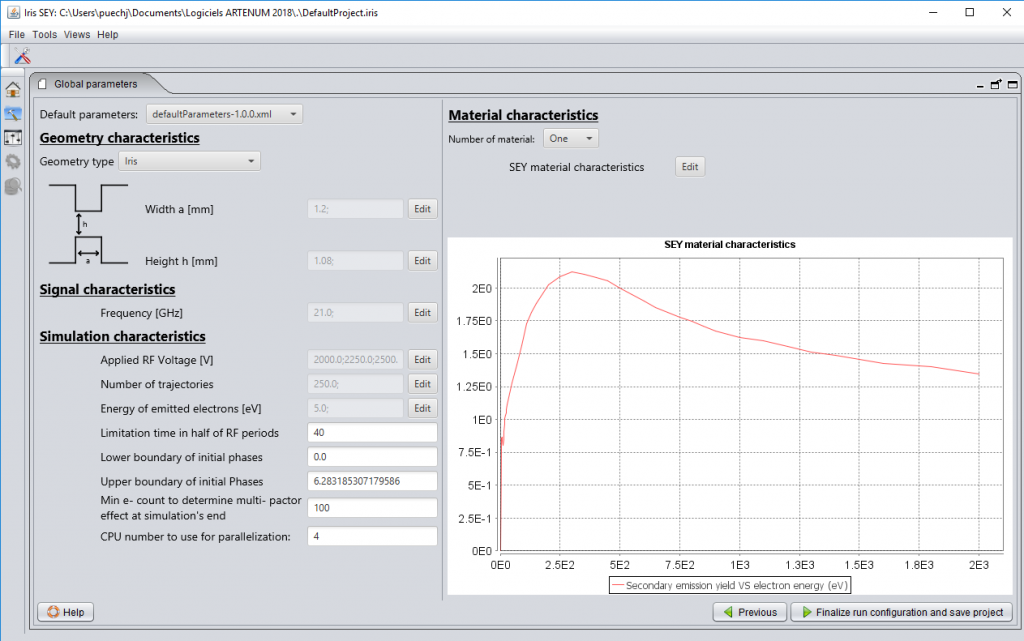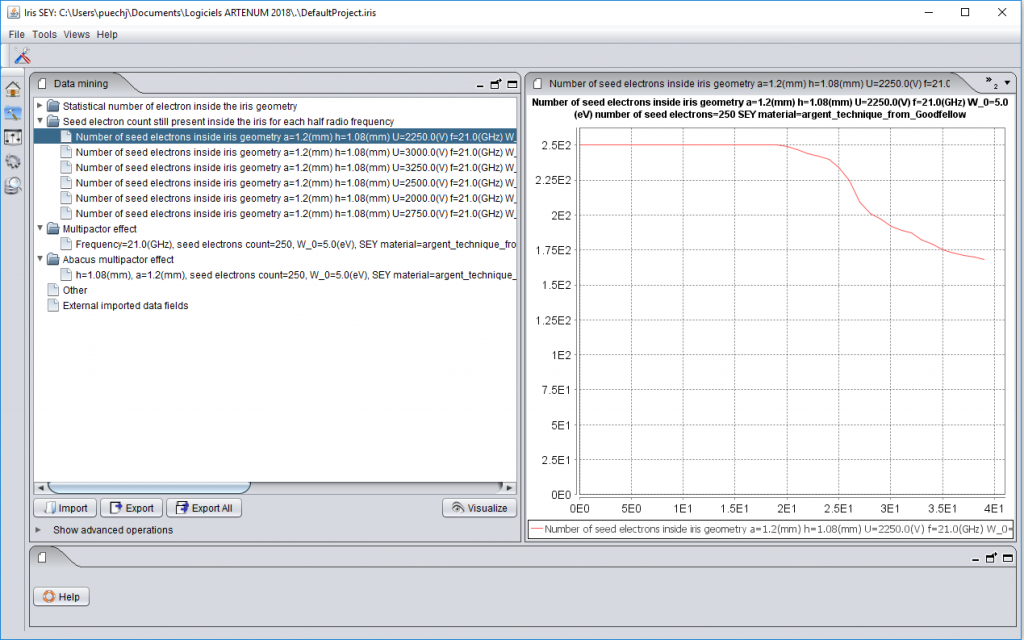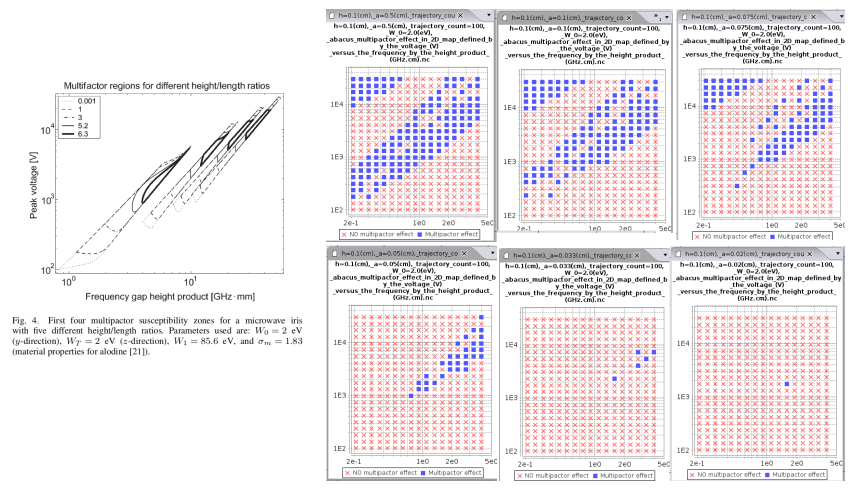Iris-SEY, for Secondary Emission Yield, is a user-friendly simulation software for multipactor effect inside iris structures and infinite parallel plates which can be found in many RF components.
Initiated and funded by CNES, Iris-SEY has been developped by the Artenum company and is available under the GPL license.
The numerical core of the Iris-SEY software has been developed based on the following publications:
- [1] Udijlijak R., Andersion D., Lisak M. Puech J., E. Semenov V., Multipactor in a Waveguide Iris, IEEE Transaction on Plasma Science, Vol. 35, No. 2, April 2007
- [2] Semenov V, Rakova E., Anderson D., Lisak M., Puech J., Conformal mapping analysis of multipactor breakdown in waveguide irises, Physics of Plasma 15, 033501, 2008.
- [3] E. Semenov V, Rakova E., Nefedov I. M., Shereshevskii I.A., Vdocheva N.K., Udiljak R., Anderson D., Lisak M., Puech J., Study of multipactor in waveguide irises.
- [4] Puech J, Semenov V. E., Rakova E. I., Anderson D., Belhaj M., CNES – Chalmers – IAP – ONERA activities in the domain of high rf power breakdown phenomena, 2016 IEEE International Conference on Plasma Science (ICOPS), 19-23 June 2016, Banff, Canada
Through the Iris-SEY graphical interface, it is possible to set various input parameters for the simulation such as the iris dimensions, signal characteristics and material secondary emission property that can be visualised in Iris-SEY (It is also possible to set different material for the two metallic walls). In order to optimise the computation time, it is possible to launch multi-threaded simulations. It is possible to launch parametric studies by setting various values for the simulation inputs.

After the simulation run, it is possible to visualise different kind of results as indicated in Data Mining panel. It includes for example the number of electrons inside the geometry or the multipactor effect abacus representing the voltage versus the frequency times the distance between the walls.

A simulation validation campaign was performed and the results were in good agreement with the measurements presented in [4] and the simulation part is presented below.
